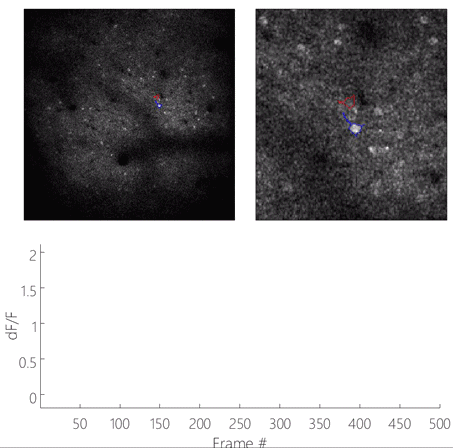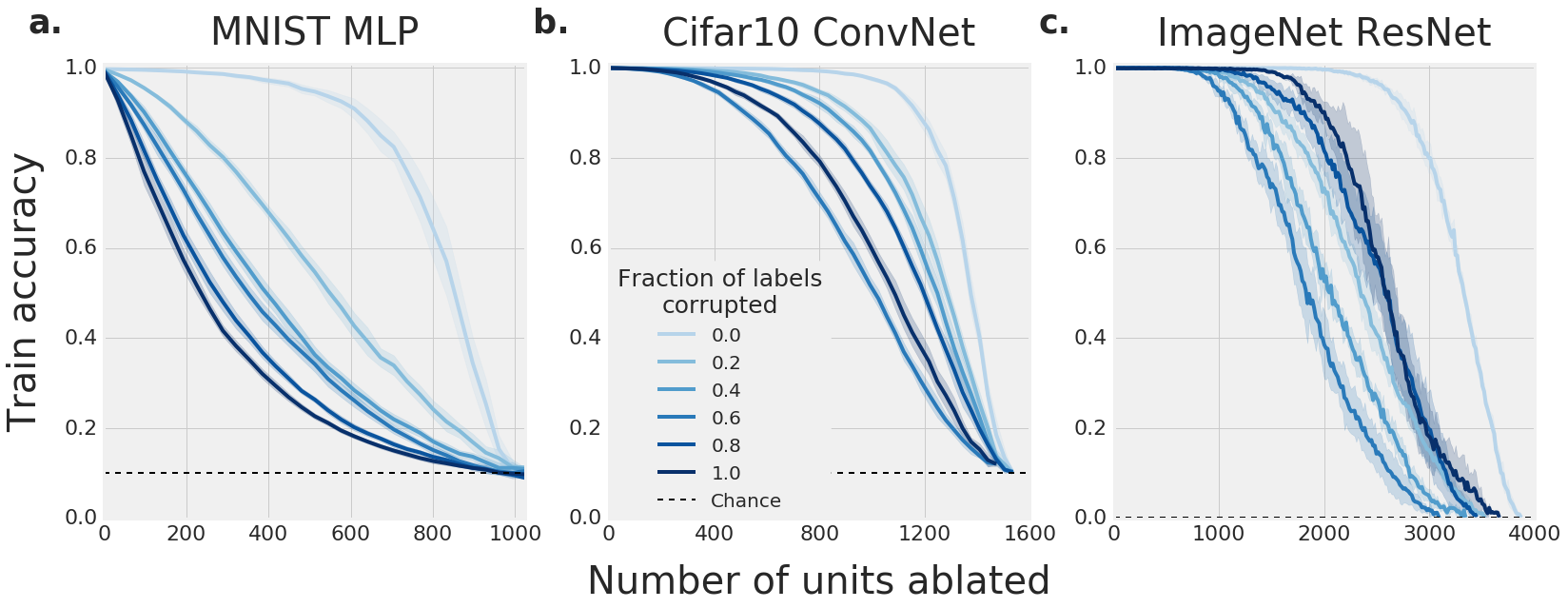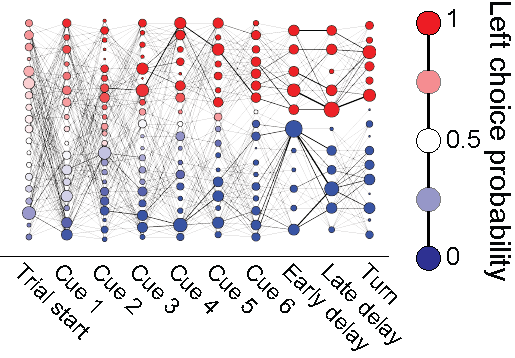Research
Deep learning
Manipulating neural circuits in vivo is incredibly challenging. Moreover, the measures of neuronal activity we record are noisy, with noise being added by both the microscope and the calcium indicator. If we can replicate the circuit in silico, we would be able to overcome both of these obstacles as we would have complete control of the circuit and perfect measures of its activity. Using recurrent neural networks, we are working on replicating the dynamics of neural circuits in cortex in this manner. Hopefully, interrogation of these in silico circuits will allow us to generate new predictions about the neural dynamics which we can then test experimentally in vivo.
Neuroscience
 I am interested in how neuronal populations in cortex perform the computations relevant for complex behavior.
In particular, I've focused on evidence accumulation for decision-making. We make important decisions every day,
and the vast majority of them require us to accumulate multiple, discrete, pieces of evidence on both short
and long timescales to arrive at an accurate decision. For example, on a short timescale, when deciding which
way to turn while driving, we might combine our position, streetsigns, information from maps, and landmarks
to make a correct turn. The accumulation of evidence for decision-making is an essential
component of our daily lives, and yet, the neuronal circuit mechanisms which perform the computations necessary
for this complex task remain unknown.
I am interested in how neuronal populations in cortex perform the computations relevant for complex behavior.
In particular, I've focused on evidence accumulation for decision-making. We make important decisions every day,
and the vast majority of them require us to accumulate multiple, discrete, pieces of evidence on both short
and long timescales to arrive at an accurate decision. For example, on a short timescale, when deciding which
way to turn while driving, we might combine our position, streetsigns, information from maps, and landmarks
to make a correct turn. The accumulation of evidence for decision-making is an essential
component of our daily lives, and yet, the neuronal circuit mechanisms which perform the computations necessary
for this complex task remain unknown.
To uncover the inner workings of these circuits, we use a recently developed behavioral paradigm to train mice to perform complex decision-making tasks requiring the accumulation of multiple, discrete pieces of evidence while using two-photon microscopy to simultaneously image the activity of hundreds of neurons in layers 2/3 of the Posterior Parietal Cortex (PPC). With these datasets in hand, we leverage a variety of data analytics, ranging from the classic techniques of reverse correlation to recent breakthroughs in machine learning to uncover the inner workings of these circuits.
The neural dynamics underlying these tasks are incredibly complex and developing better methods to analyze these data is essential to our understanding. In particular, I've focused on developing methods to analyze neuronal popualation dynamics on single trials. Using such analyses, we were able to identify multiple major features of the population activity, including a distributed code among heterogeneous individual neurons, history signals for past events lasting seconds, and structured trial-trial variability that was predictive of past and future activity patterns. Together our results provide data that contradict the long-standing models of evidence accumulation and that propose a novel model of computation based on large-scale neuronal population dynamics.
Publications
On the importance of single directions for generalization
Morcos AS, Barrett DGT, Rabinowitz NC, and Botvinick M. ICLR 2018.
Download PDF ArXiv OpenReview
DeepMind Blog: Understanding deep learning through neuron deletion
BBC The Register Silicon Angle

History-dependent variability in population dynamics during evidence accumulation in cortex
Morcos AS and Harvey CD. Nat. Neurosci. vol. 19, no. 12, pp. 1672–1681, 2016. doi: 10.1038/nn.4403.
Download PDF
News and Views: Many paths from state to state
Kaufman MT and Churchland AK. Nat. Neurosci. vol. 19, no.12, pp. 1541–1542, 2016. doi:10.1038/nn.4440
Download PDF

REST regulates non-cell-autonomous neuronal differentiation and maturation of neural progenitor cells via Secretogranin II
Kim HJ, Denli AM, Wright R, Baul TD, Clemenson GD, Morcos AS, Zhao C, Schafer ST, Gage FH, and Kagalwala MN, J. Neurosci., vol. 35, no. 44, pp. 14872–14884, 2015. doi: 10.1523/JNEUROSCI.4286-14.2015.
Download PDF
